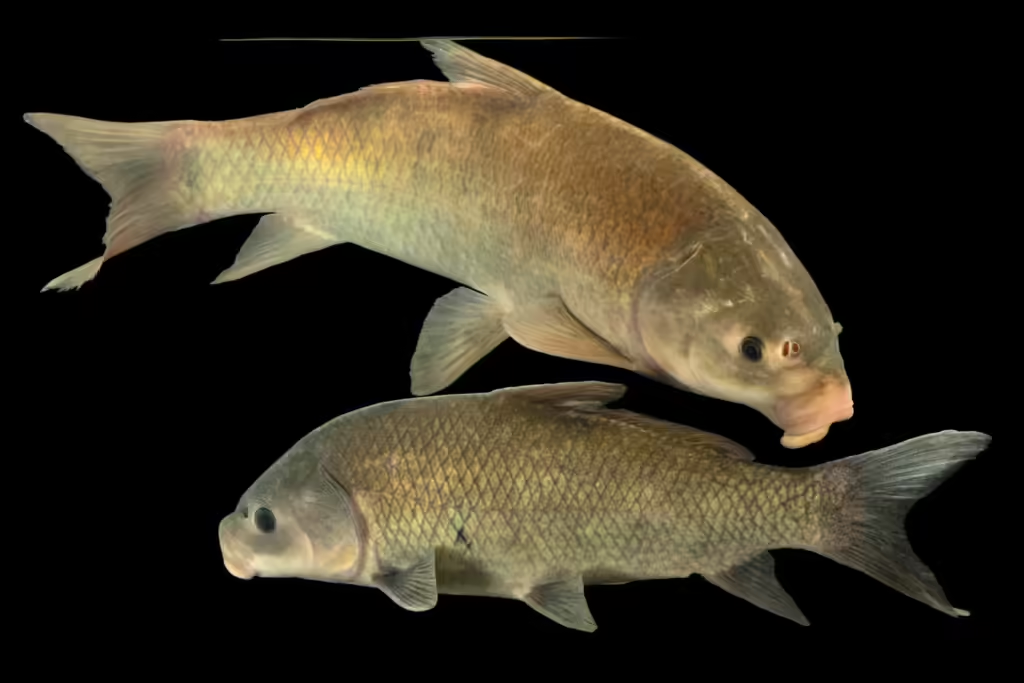Angler Stuart Black has caught a lot of fish in his days, but when he landed his first buffalofish in Arizona’s Apache Lake in 2019, he had a hunch something was special about it.
“I didn’t even know why at the time,” he says. At 13 pounds, it wasn’t even that big—he’s caught bigger.
Turns out, his intuition was right. Scientists recently confirmed that the majority of the buffalofish swimming around this remote desert lake in eastern Arizona are older than a hundred.

The discovery builds on other recent research that has upended beliefs about the little-studied buffalofish, a genus of five freshwater fish species native to North America.
Just a few years ago, scientists thought that these fish, which come in an array of colors from chestnut brown to bluish, only lived into their mid-20s. However, a 2019 study revealed that bigmouth buffalofish could live up to 112 years old, making it the oldest known freshwater teleost, a group of about 12,000 ray-finned fish species found worldwide. Then in January, researchers announced the discovery of a 127-year-old bigmouth in Saskatchewan, Canada.
Now, the new study, published recently in Scientific Reports, confirmed that two more buffalofish species—the smallmouth buffalo and the black buffalo—can live more than a hundred years, making it the only known genus of animal besides the marine rockfish, Sebastes, that has three centenarian species.
This is not to say that other animals can’t achieve remarkably long life spans. Greenland sharks have the greatest longevity of any living vertebrate, reaching at least 250 years old.
What’s more, research has revealed that buffalofish continue to live their best lives into their upper 80s and 90s, with better stress response and immune function relative to younger individuals. (See six of the world’s longest-lived animals.)
“The one takeaway is that buffalofishes do not conform to preconceived notions,” says study leader Alec Lackmann, a fish expert at the University of Minnesota. “They defy expectations.”
Desert discovery
For the Arizona study, a few dozen anglers, including Black, caught 222 buffalofish at Apache Lake from July 2018 to July 2023. Twenty three were humanely euthanized and donated to the research team, who estimated the fishes’ ages by removing and analyzing tiny ear stones called otoliths. These calcium carbonate structures, which allow fish to hear and sense vibrations in the water, form a new layer each year that can be read somewhat like tree rings.
The otolith analysis revealed that about 90 percent of Apache Lake’s buffalofishes were more than 85 years old. Researchers aged individuals of all three species studied there—smallmouth buffalo, bigmouth buffalo, and black buffalo—past a hundred years old.
For the other 199 fish, the anglers used a technique called catch-photo-release, in which they reeled in fish with tiny barbed or no-barbed hooks that avoid hurting the animal. All were photographed, and 129 were weighed before releasing them back into the lake. Researchers estimated live fishes’ ages by studying orange and black spots in the anglers’ photographs.
“Several species of large riverine fishes like sturgeon and alligator gar are known to live more than 50 years,” says Nathan Farnau, curator of fishes and invertebrates at the Georgia Aquarium in Atlanta, who wasn’t involved in the study.
Hardy non-natives
What makes these findings even more remarkable, Lackmann says, is that these fish aren’t even native to the state. About 400 of them arrived to Arizona by rail in 1918 as part of a U.S. Bureau of Fisheries plan to establish a commercial fishery in Roosevelt Lake, a dammed reservoir on the Salt River. Apache Lake, part of the same river system, was later established and some of the fish eventually migrated there by swimming downstream.
The bigmouth buffalo’s native range spans from southern Saskatchewan down into Texas and Louisiana, with smallmouth and black buffalo sharing similar ranges that also include parts of Ontario, New Mexico, and Mexico. The fish in Apache Lake likely came from a hatchery in Iowa, Lackmann says.
He adds that the new findings indicate that some of the original stockfish still live in the Salt River system.
“It’s like a rugged desert environment in that reservoir, yet they still are able to persist across a century,” Lackmann says. “Just imagine taking a wild animal and putting it in a novel habitat like that. If anything, you would expect they wouldn’t live as long.”
Fountain of youth?
Buffalofish can go decades between successful reproductions because they require very specific environmental conditions—most of which are still unknown—to procreate. That’s why the fish evolved to live so long: It’s an evolutionary adaptation to account for long periods without breeding, according to Lackmann.
In Saskatchewan, where buffalofish can go up to 50 years without producing offspring, the fish only attempt to spawn within a narrow range of water-level fluctuations that may rarely occur.
Lackmann says further studies into buffalofish longevity could provide insight into how vertebrates, including humans, can live longer.
“One of the major outstanding questions about the buffalofishes is how they do it in terms of their amazing longevity. What is their fountain of youth?”
One strategy may be understanding why older buffalofish are less stressed and have stronger immunity than younger fish, which was confirmed in a 2021 study on bigmouth buffalofish.
Older individuals could fight off bacteria better than younger animals. Not only that, the elderly fish had a lower ratio of neutrophils to lymphocytes in the blood, an indication of lower stress levels.
“They are still advancing into prime condition at a century old, which is astonishing,” Lackmann says.
Meanwhile, conservation is a priority, he says. Buffalofish are a prized sportfish in the upper Midwest, and while their numbers are declining, harvest is virtually unregulated—including in Arizona.
“Right now, you can go to Apache Lake, catch a buffalofish, and just take it home,” Black says. “So for me, getting them protected now is probably the most important thing.”

